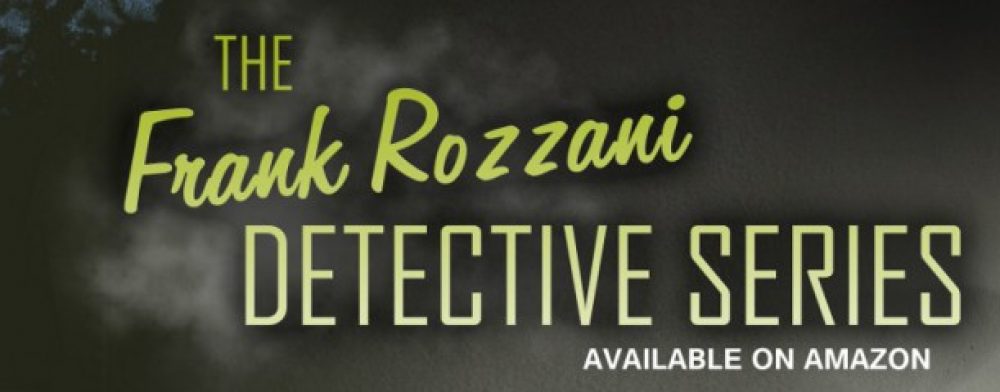Fellow authors,
My post this week is all about the activity that most of us probably enjoy the least, marketing our work. You’ve probably seen my posts all over Facebook and my tweets. This is the part of independent publishing that I dread and that is the most cumbersome.
I’m sure most of us would just like to write and ignore the marketing. Unfortunately, if you want to gain exposure, this is an unavoidable aspect of what we do.
For the mundane marketing tasks, such as posting to Facebook and other social media outlets, I have found time-saving ways to raise the awareness of my product. I’ve also enlisted the help of a PR person to help me gain exposure through third parties like podcasts and blog interview tours.
I will make sure that future blog posts focus on some of these aspects of marketing. I have some great tips to share around posting on social media and using giveaways to build your mailing list, another very important aspect of marketing.
In this post, however, I want to talk about the best aspect of marketing for an independently published author, writing. That’s right, the more you write, the more exposure you’ll gain and the more product you’ll have to offer to the very deep pool of readers. Here are some reasons to write as much as possible:
1) More Product = More Potential Readers: There are a lot of consumers of books out there. The more offerings you have, the more exposure you will get with those readers if they like your work. If you only release one book every 1-2 years, you might fade from the memory of readers that read 2-3 novels per month.
2) More Product = More Potential Reviews: I’ve blogged about feedback and its importance in the past. It’s advantageous to get feedback on multiple works so that you can assess how readers are reacting to your work and make adjustments. It also gives you the chance to get reviews from multiple (non-family) independent reviewers which will help your profile on platforms such as Amazon.
3) More Product = Greater Traction: In traditional publishing, it takes an author an average of three books to gain traction. On a publisher’s schedule, this is a minimum of three years if you’re lucky enough to find a publisher that will wait for success through three books. Did you know that John Grisham had boxes of the book A Time To Kill in his garage until The Firm became a huge hit. It was his first book and probably one of his best in terms of substance. The good news is that we can accelerate that period of time and get to that three book milestone more quickly.
4) Less Product = Selling Your Book to Death: If you only have one book and you’re posting weekly to your favorite social media outlet, you’re going to hit the same targeted readers multiple times with your single offering. This can turn readers off to you’re single work because they are overexposed to it.
5) The more books you write, the more books you’ll sell: There is something called the Long-Tail Effect. This is the tendency of readers to go back and purchase older books by an author if they read a newer one that they enjoy. This is how I’ve discovered many authors. Harlan Coben is a case in point for me. I read one of his later books and liked his writing style and this caused me to go back and read his earlier work chronologically. If you are on your 4th or 5th book and it hits with readers, it is almost guaranteed that your earlier books will sell more.
Now, after my pep talk extolling the virtues of writing multiple books, that doesn’t mean you should do so without some important do’s and don’ts.
1) Make sure that what you are publishing is of good quality: Publishing 12 books that are not of good quality will not gain readers for you. A reader will take a chance on 1 or maybe 2 books, but continued quality issues will ensure that your books will not be read or attract loyal readers. Negative word of mouth spreads as fast, if not faster, than positive.
2) Consider writing short stories: If your an author of fiction, short stories can be useful for multiple reasons. First, they are a great way to practice your craft. Second, they can be published individually to give readers a small, inexpensive taste of your writing, or they can be collected into an anthology giving you another book to offer. Also, short stories can be a way to further gain exposure by offering them for publication in niche online or print magazines and collections. Hugh Howey’s Epic series, Wool, started as a short story.
3) Don’t rush to publish something before it’s ready: I’ve extolled the virtues of editors and beta readers. Don’t cut corners. Make sure that you have done all of your quality checks before launching. One slip in quality and your readers may abandon you.
4) Don’t be afraid to relaunch a book: Once you’ve published a book, that doesn’t mean that it will reach a peak early on and then fade away. Remember my John Grisham story. A Time To Kill is believed by many to be his best work and is arguably the best adaptation of one of his novels into a movie.
5) Play with pricing and giveaways: When you have a new book coming out, consider lowering the prices of your earlier books or using the free or progressive pricing options on Amazon to entice readers to impulse buy them.
The information in this blog evolves for me on a daily basis. If you take nothing else away from this, strive to learn from the tasks that you carry out to gain a positive reputation as an author. Remember, authors write books. Don’t pay attention to the artificial time constraints imposed on traditionally published authors. Break out of the box and keep on writing.
As always, your questions and comments are welcome.
About Don Massenzio
Don Massenzio was born in Syracuse, New York, to first generation Italian American parents. He is an avid reader. Some of his favorite authors include Harlan Coben, David Morrell, Stephen King, and Hugh Howey. His favorite book of all time is ‘To Kill a Mockingbird’.
Don began writing as a way to combat the long hours of travel and numerous hotel stays that are part of the ‘glamorous’ world of corporate travel. He uses writing as a therapeutic outlet. He recently took the jump to sharing his work with others.
His first published long work is the novel, Frankly Speaking. It is the first of what will be a series of books focused on the character, Frank Rozzani, a Florida private detective. The book is a throwback to the days of pulp detective novels with a tip of the hat to Jim Rockford from 70’s television and The Rockford Files.
The second Frank Rozzani detective novel, Let Me Be Frank is now available.
Prior to finishing his books, his published work was comprised of short stories that will be merged into a collection in the near future.
Find out more about Don at his web site:
www.donmassenzio.com
30.092609
-81.608977



 This post focuses on the importance of using an editor and enlisting beta readers if you are an independent author.
This post focuses on the importance of using an editor and enlisting beta readers if you are an independent author. The first, and perhaps most important, service that an independent author should look for is editing. What is editing with respect to a book? There is no simple answer to this. I suppose that editing, in its purest form, is checking your work for punctuation, spelling, usage, and grammar errors. These things are important. You may think, as an author, that you are an expert on these things. You may very well be very proficient in these areas, but over the course of a 70,000 word manuscript consisting of your own work, you are going to miss something. Having a fresh set of eyes with some expertise can help save you embarrassing typos and spelling mistakes.
The first, and perhaps most important, service that an independent author should look for is editing. What is editing with respect to a book? There is no simple answer to this. I suppose that editing, in its purest form, is checking your work for punctuation, spelling, usage, and grammar errors. These things are important. You may think, as an author, that you are an expert on these things. You may very well be very proficient in these areas, but over the course of a 70,000 word manuscript consisting of your own work, you are going to miss something. Having a fresh set of eyes with some expertise can help save you embarrassing typos and spelling mistakes. The second focus of this blog is the use of beta readers. Beta readers are early previewers of your book that read through it after the editing process is complete. They look for story element inconsistencies and other elements of your book from the perspective as a fan and a reader. It’s a good idea to pick a couple of readers that are big fans of your writing, but are not afraid to give suggestions. This process is like having a focus group or preview audience for your product that gives their opinion to you on a small scale before you release it to the relentless general public. Beta readers will spot things in your book that you and your editor missed such as inconsistencies in character traits, likability of your characters, and other intangibles. This is especially importance if your characters span more than one book in a series. You don’t want to publish a book in a series that has continuity issues with previous books.
The second focus of this blog is the use of beta readers. Beta readers are early previewers of your book that read through it after the editing process is complete. They look for story element inconsistencies and other elements of your book from the perspective as a fan and a reader. It’s a good idea to pick a couple of readers that are big fans of your writing, but are not afraid to give suggestions. This process is like having a focus group or preview audience for your product that gives their opinion to you on a small scale before you release it to the relentless general public. Beta readers will spot things in your book that you and your editor missed such as inconsistencies in character traits, likability of your characters, and other intangibles. This is especially importance if your characters span more than one book in a series. You don’t want to publish a book in a series that has continuity issues with previous books.



 4) Make the back story believable and realistic: As an author, you should think out the main points of your main characters’ back story. Don’t invent events just to suit your story. The back story should be grounded in some type of reality. You can’t have your character defeat their enemy with a complex form of martial arts if studying the techniques do not make sense in the characters background. Maybe he or she was in special forces or spent time in Asia.
4) Make the back story believable and realistic: As an author, you should think out the main points of your main characters’ back story. Don’t invent events just to suit your story. The back story should be grounded in some type of reality. You can’t have your character defeat their enemy with a complex form of martial arts if studying the techniques do not make sense in the characters background. Maybe he or she was in special forces or spent time in Asia.